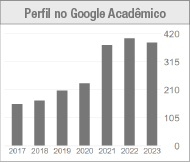The friendship as a way of resistance: reflections about Amista' (2021) circus play
DOI:
https://doi.org/10.5965/1414573102472023e0102Keywords:
Circus, Street art, Political art, BodyAbstract
The following work sought to develop a series of analyzes and reflections based on the circus play Amista' (2021) by Tomi Soko, in which the intimate and affective relationship of three traffic light jugglers unfolds. It was interesting to think about the political decision to create from that starting point, since tensions over money, competition between street artists and the dispute for recognition are exposed during the work. The article was structured in three axes where the political acquires specific connotations: the theme, the language and the creative process; perspectives that in turn feed each other. Doing the reverse path to the staging, we started from the visible result to delve into the initial investigation process of the work, putting in the center the question about the relationship between the bodily knowledge of the traffic light jugglers and the aforementioned axes.
Downloads
References
AGAMBEN, Giorgio. ¿Qué es un dispositivo?. Ciudad Autónoma de Buenos Aires: Adriana Hidalgo Editora, 2016.
CORNAGO, Óscar. ¿Y después de la performance qué? Público y teatralidad a comienzos del siglo XXI. Urdimento - Revista de Estudos em Artes Cênicas, Florianópolis, v. 1, n. 26, p. 20-41, jul. 2016. Disponible en: https://doi.org/10.5965/1414573101262016020. Consultado el: 27 jul. 2023.
DEBORD, Guy. La sociedad del espectáculo. Ciudad Autónoma de Buenos Aires: La Marca Editora, 1995.
DIEGUEZ, Ileana. Escenarios limítales. Teatralidades, performatividades, políticas. México D. F.: Paso de gato, 2014.
FLORES, Valeria. La intimidad del procedimiento. Escritura, lesbiana, sur, como prácticas de sí. Badebec, v. 6, n. 11, p. 230-249, 2016. Disponible en: http://hdl.handle.net/2133/15255. Consultado el: 27 jul. 2023.
GAGO, Verónica. ¿Quién es y cómo piensa Bifo?. Entrevista a Franco “Bifo” Berardi. Lavaca, [s. l.], 26 feb. 2008.
Disponible en: https://lavaca.org/notas/quien-es-y-como-piensa-bifo/. Consultado el: 27 jul. 2023.
GROYS, Boris. Volverse público: las transformaciones del arte en el ágora contemporánea. Ciudad Autónoma de Buenos Aires: Caja Negra, 2018.
INFANTINO, Julieta. Circo en Buenos Aires: cultura, jóvenes y políticas en disputa. Ciudad Autónoma de Buenos Aires: Inteatro, 2014.
INFANTINO, Julieta, SÁEZ, Mariana, SCHWINDT SCIOLI, Clarisa, comp.. Pedagogías Circenses. Experiencias, trayectorias y metodologías. Comp. julieta Infantino, Mariana Sáez, Clarisa Schwindt Scioli. La Plata: Editorial Club Hem, 2021.
INFANTINO, Julieta. “El arte callejero no es delito”: procesos de politización de la cultura en la ciudad de buenos aires, argentina. Etnografica, [s. l.], v. 3, n. 25, p. 657-679, 1 out. 2021.
Disponible en: https://doi.org/10.4000/etnografica.10614. Consultado el: 25 jul. 2023.
LIEVENS, Bauke. Between Being and Imagining: 2013-2017. Disponible en: https://www.circusdialogue.com/. Consultado el: 30 de oct. 2022.
MANCILLA, Claudio Andrés Barría. Geopoética dos sentidos, a/r/tografia e o patrimoniável em chave descolonial: por uma poética do sul. Poiésis, [s. l.], v. 20, n. 34, p. 87, dez. 2019.
Disponible en: https://doi.org/10.22409/poiesis.v20i34.38312.
NEGRI, Francisco. (Otras) formas de poner el cuerpo: circo escritura y herencia. Jornadas Internacionales/Nacionales de Historia, Arte y Política 2021. Universidad Nacional del Centro de la Provincia de Buenos Aires. Tandil. Disponible en: https://www.academia.edu/80312919/_Otras_Formas_de_poner_el_cuerpo_circo_escritura_y_herencia_.
NEGRI, Francisco. Escribir circo como se construye un hogar. Pistas de circo, Argentina, Escrito #0, 2022. Disponible en: www.pistasdecirco.com/francisconegri.
PIEL DE LAVA. La creación grupal. En: AJAKA, Alberto … [et.al.]. Detrás de Escena. Ciudad Autónoma de Buenos Aires: Excursiones, 2015, p. 125-130.
RANCIÈRE, Jacques. El reparto de lo sensible: estética y política. Buenos Aires: Prometeo libros, 2014.
Published
How to Cite
Issue
Section
License
Copyright (c) 2023 Urdimento: Revista de Estudos em Artes Cênicas

This work is licensed under a Creative Commons Attribution 4.0 International License.
Copyright Statement
The articles published by the magazine are free to use. The copyright is all assigned to the magazine. The articles whose authors are identified represent the expression from the point of view of their authors and not the official position of the journal Urdimento. The author (s) undertakes whenever publishing material relating to the article published in Revista Urdimento mention the said publication as follows: This article was originally published by Urdimento magazine in its volume (put the volume), number (put the number) in the year of (put the year) and can be accessed at:
http://www.revistas.udesc.br/index.php/urdimento
This work is licensed under a Creative Commons Attribution 4.0 International License.




